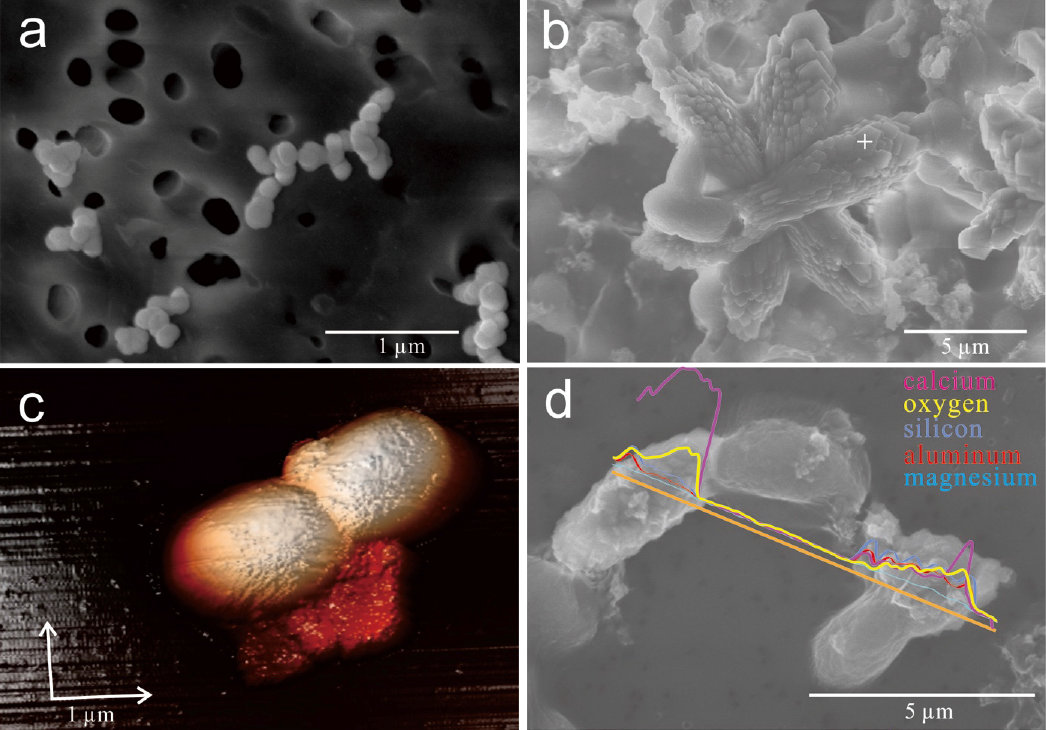séminaire vendredi 25 novembre 2022
 Biogeochemistry at the interfaces: mechanisms and applications from dolomites to bio-cement
Biogeochemistry at the interfaces: mechanisms and applications from dolomites to bio-cement
Maria Dittrich, Earth Sciences Department, University of Toronto
Vendredi 25 novembre à 14 h 30, amphi Thénard
Résumé
In this talk, I will first present the results of our studies on the role of microbes in dolomite formation in a hypersaline environment. Although significant advances in our understanding of dolomite precipitation have been made, the abundance of ancient dolomitic sequences remains an enigma. Our multi-seasonal work with microbial mats in the hypersaline sabkhas of Qatar shed light on the interplay between in environmental conditions, microbial communities and dolomite formation. We observed cyclical fluctuations in microbial community composition which shift from growing microbial mats (GMM) with oxygenic phototrophs to decaying microbial mats (DMM) which are dominated by anoxygenic phototrophs. Our findings suggest that the interplay between oxygenic and anoxygenic phototrophs is a key factor for dolomite formation.
The focus of the second part of my talk is a strategy for healing cracks in concrete by microbial carbonate precipitation (MCP). Concrete is a widely used construction material with a global production growing by 2.5 % annually. Among strategies for healing cracks and recycling concrete, microbial carbonate precipitation (MCP) by nitrogen involved heterotrophic bacteria showed great potential. We investigated an alternative technology using auto-phototrophic cyanobacteria which can overcome the pollution generated by urea-based MCP. I will show and discuss the results of our studies on cyanobacterial carbonate precipitation (CCP) in concrete and mortar, and its impact on their performance.
- extrait:
- lien_externe:
- titre:
- intervenant:
- date:
- kc_data:
- a:8:{i:0;s:0:"";s:4:"mode";s:0:"";s:3:"css";s:0:"";s:9:"max_width";s:0:"";s:7:"classes";s:0:"";s:9:"thumbnail";s:0:"";s:9:"collapsed";s:0:"";s:9:"optimized";s:0:"";}
- kc_raw_content:
 Biogeochemistry at the interfaces: mechanisms and applications from dolomites to bio-cement
Biogeochemistry at the interfaces: mechanisms and applications from dolomites to bio-cementMaria Dittrich, Earth Sciences Department, University of Toronto
Vendredi 25 novembre à 14 h 30, amphi Thénard
Résumé
In this talk, I will first present the results of our studies on the role of microbes in dolomite formation in a hypersaline environment. Although significant advances in our understanding of dolomite precipitation have been made, the abundance of ancient dolomitic sequences remains an enigma. Our multi-seasonal work with microbial mats in the hypersaline sabkhas of Qatar shed light on the interplay between in environmental conditions, microbial communities and dolomite formation. We observed cyclical fluctuations in microbial community composition which shift from growing microbial mats (GMM) with oxygenic phototrophs to decaying microbial mats (DMM) which are dominated by anoxygenic phototrophs. Our findings suggest that the interplay between oxygenic and anoxygenic phototrophs is a key factor for dolomite formation.
The focus of the second part of my talk is a strategy for healing cracks in concrete by microbial carbonate precipitation (MCP). Concrete is a widely used construction material with a global production growing by 2.5 % annually. Among strategies for healing cracks and recycling concrete, microbial carbonate precipitation (MCP) by nitrogen involved heterotrophic bacteria showed great potential. We investigated an alternative technology using auto-phototrophic cyanobacteria which can overcome the pollution generated by urea-based MCP. I will show and discuss the results of our studies on cyanobacterial carbonate precipitation (CCP) in concrete and mortar, and its impact on their performance.
